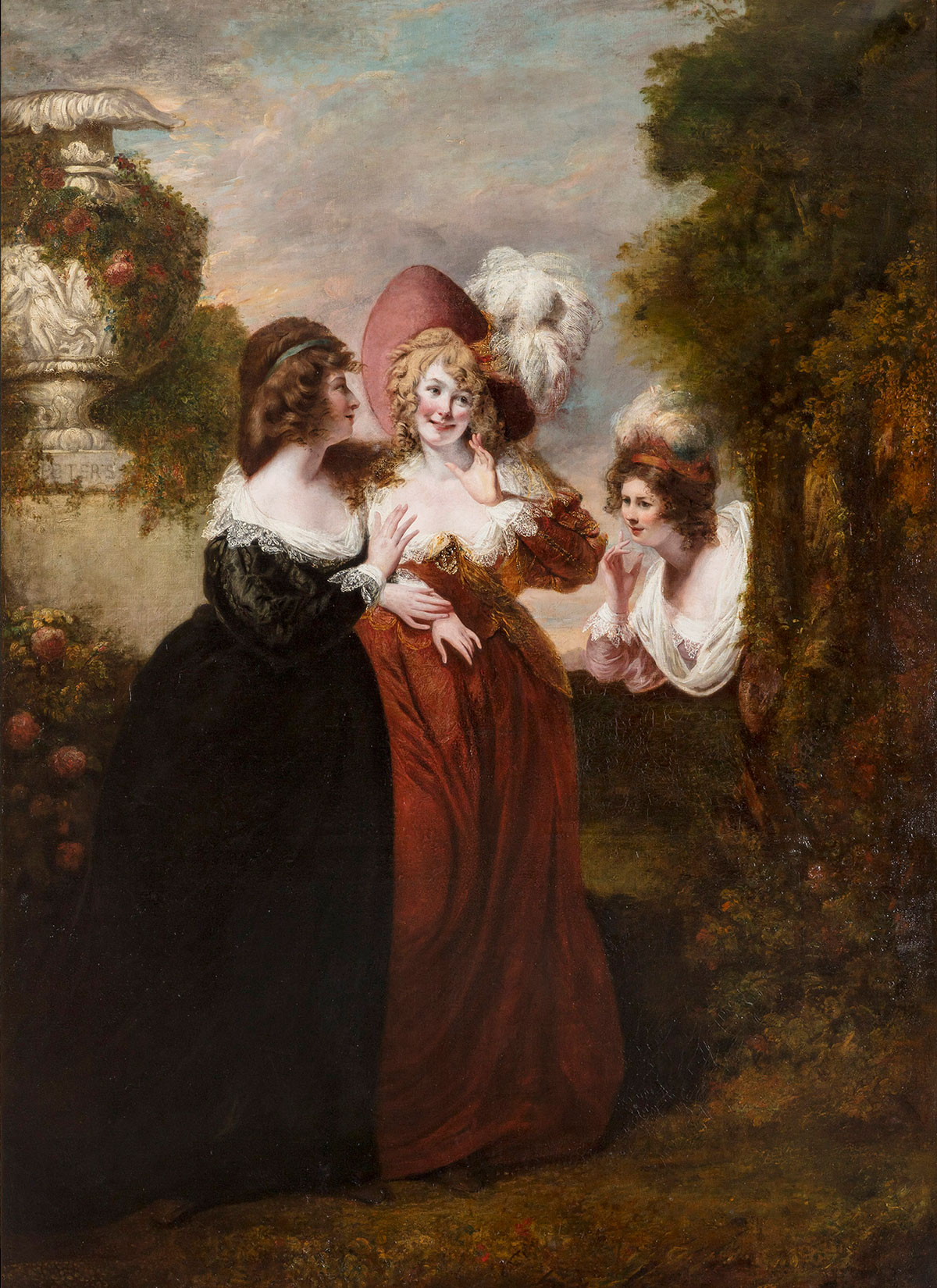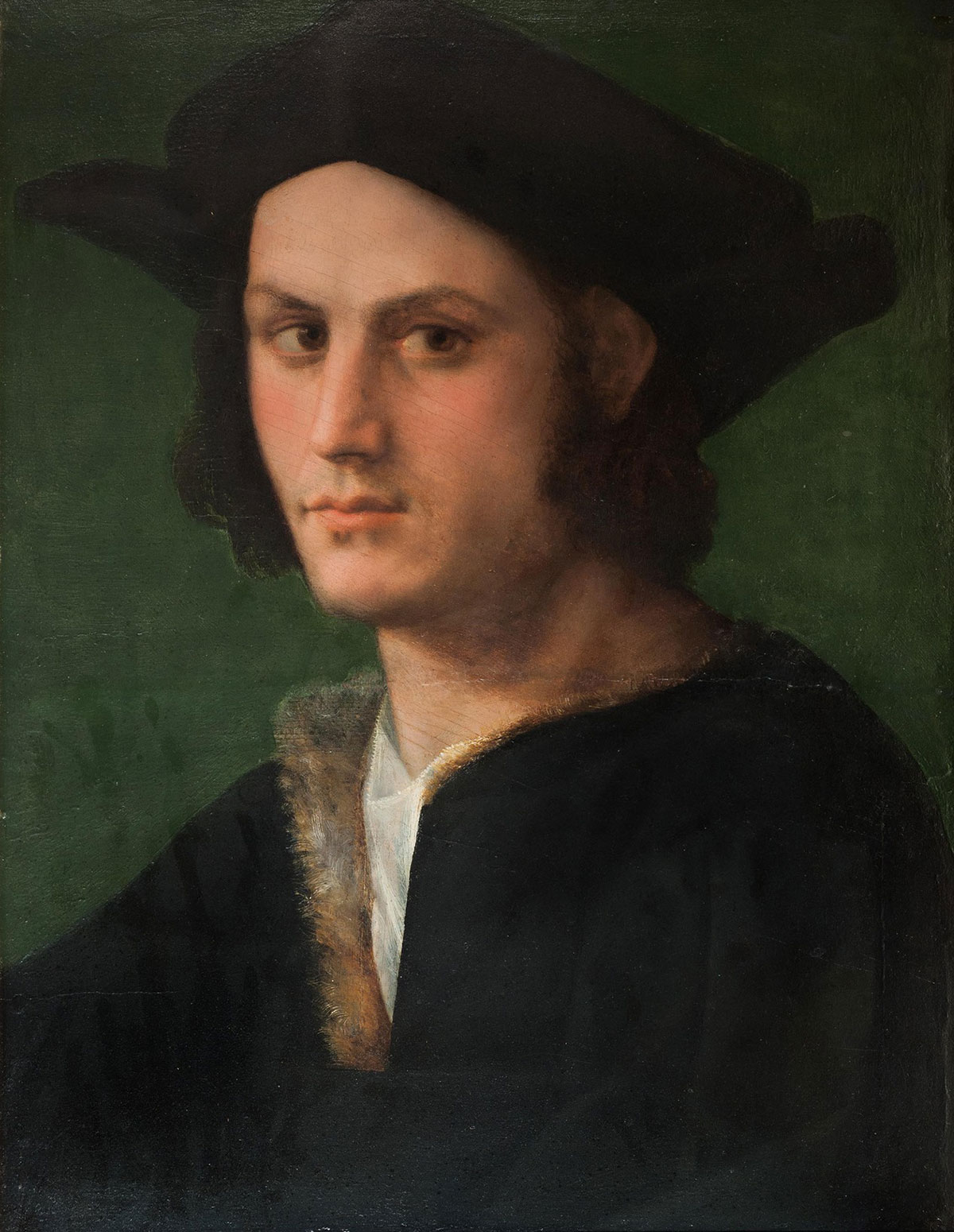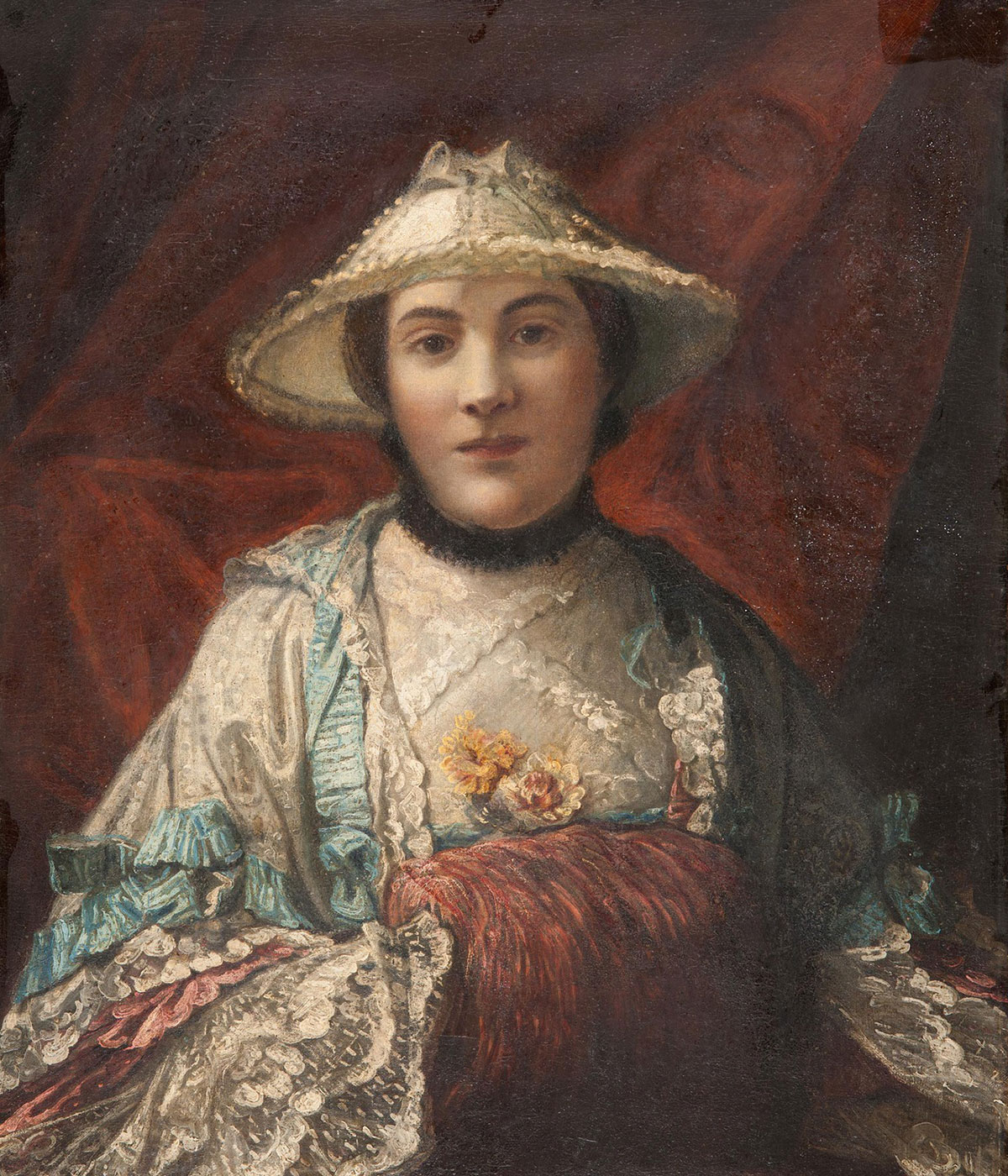Many works in our collection have a long, storied past. In the exhibition Created, Collected, Conserved, we present seven paintings that were at one time owned by the Earls of Northbrook and their predecessors. Beginning in the late 18th century, four generations of the Baring family of bankers formed one of the finest collections of English, French, Italian, and Dutch paintings in Britain. By examining provenance records and family documents, our team of curators and researchers unearthed the stories behind seven paintings from the collection.
This Tour Tuesday, discover the fascinating history behind a selection of works from this gallery!

This portrait, by the great 17th century Dutch artist Frans Hals, depicts Pieter Cornelisz van der Morsch, a court officer of Leiden, Netherlands and a member of city’s amateur literary club. Details in the painting refer to van der Morsch’s role in the club, which composed poetry and staged satirical plays. The dried herring he holds refers to the phrase “to give a red herring,” Dutch slang for rebuking someone with sarcastic remarks. The animated pose and expression convey van der Morsch’s lively character, while the slogan at the upper left, Wie begeert (“Who wants it?”), suggests his wit.
Hals’s style of visible brushstrokes (as in the hands here) differed from prevailing norms in Dutch painting and caused considerable controversy in his lifetime. Though he was a very successful artist, it was not until the 19th century, especially because of the Impressionist movement, that he was widely recognized.

Hero, Ursula, and Beatrice in Leonato’s Garden depicts a scene from William Shakespeare’s great comedy of manners Much Ado about Nothing. Its plot revolves around two love affairs, one of them the comical anti-courtship of Beatrice and Benedick. Constantly arguing with each other and sworn never to fall in love or marry, they are tricked into a romance by their friends. Here Beatrice, hiding in the bushes, overhears a conversation between Hero and Ursula. The women have fabricated a tale about Benedick’s great love for Beatrice to induce her to fall in love with him; he falls victim to a similar plot by his male friends.
The stage revivals of Shakespeare’s plays in 18th-century London were greatly enhanced in popularity by the appearance of a series of famous actresses in the various female roles. The success of these revivals inspired the creation of John Boydell’s Shakespeare Gallery, a popular commercial exhibition of painted scenes from the Bard’s plays, which opened in May 1789 and for which this painting was made.

By the early 16th century, portraiture had become a widely-practiced art form in Florence—where this portrait was painted—and in other parts of Europe. In the quest for social status and worldly immortality, members of the aristocracy and other elite members of society turned increasingly to commissioning portraits of themselves and their families.
That desire for legacy is ironic in the case of the painting, Portrait of a Young Man, since the identities of both the young man and the artist are lost to history. Because the portrait was once in the Medici collection in Florence, the young man has been reported to be a member of that family. But his identity remains unknown. And, based on style and composition, the portrait could be the work of any one of several well-known Florentine artists of this period.

The painting Vision of Saint Ildephonsus depicts the vision of Saint Ildephonsus, the seventh century theologian and Bishop of Toledo. The Virgin Mary appeared while he was praying in church and presented him with a priestly vestment in thanks for his devotion.
Most depictions of this subject are by Spanish artists. But it is not surprising that Adrian Ysenbrandt, a Netherlandish artist, also took on the subject. During this period, large parts of Europe, including what is now the Netherlands, Belgium, and Spain were under the rule of Holy Roman Emperor Charles V, and artistic trade within the empire was common. Documentary evidence shows that Ysenbrandt shipped paintings to Spain, suggesting that he painted not only for the local market but also for export.

The artworks highlighted in the Northbrook Provenance Project have more information available in the galleries than our usual wall label. Each artwork has a digital label which includes a deeper dive into the artwork’s provenance. The word provenance describes an artwork’s history, including the chronological record of who owned it and its movement from one place to another.
For example, you might have an object that belonged to an older family member. You know the history of this object within your family, which makes the object have greater significance to you. We share stories about the provenance of these artworks for a similar reason; it helps everyone understand what the object has meant to people over the course of its existence.
Look at the digital labels that highlight provenance at the Northbrook Project website. Select a painting for more details and an animated timeline to learn more about the painting’s history.